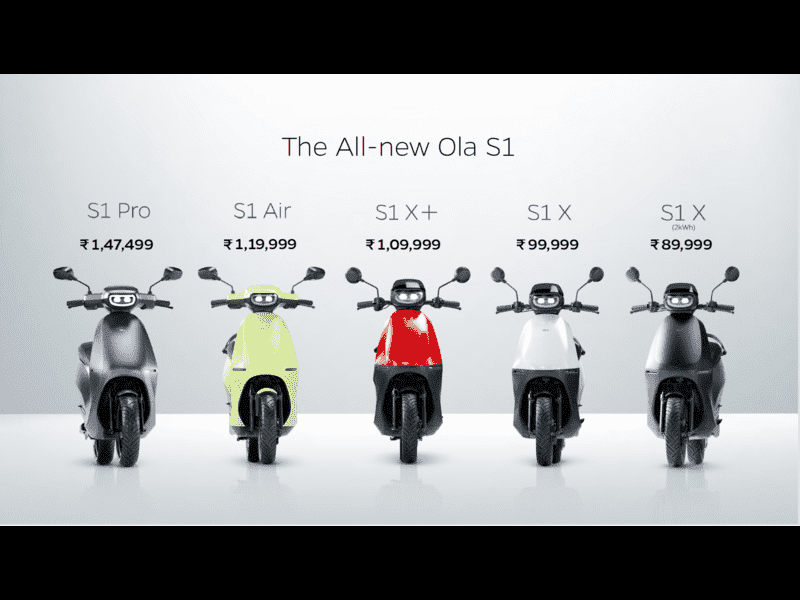Ola Electric has announced a price drop of Rs 25,000 for its S1 scooter range this month. The company said it has achieved this due to its strong cost structure, in-house technology and manufacturing capabilities, and eligibility to manufacturing incentives.
What are the new prices of Ola Electric S1 scooters?
The revised prices of the S1 portfolio are as follows:
- S1 Pro: Rs 129,999 (down from Rs 147,499)
- S1 Air: Rs 104,999 (down from Rs 119,999)
- S1 X+: Rs 84,999 (down from Rs 109,999)
- S1 X (4kWh): Rs 109,999 (unchanged)
- S1 X (3kWh): Rs 89,999 (unchanged)
- S1 X (2kWh): Rs 79,999 (unchanged)
The new prices are effective only in February and will be applicable across all states where the company operates.
Why did Ola Electric reduce the prices of its S1 scooters?
Ola Electric said it has reduced the prices of its S1 scooters on the back of a robust cost structure coupled with strong vertically integrated in-house technology and manufacturing capabilities. The company also said it is eligible to manufacturing incentives under the Production Linked Incentive (PLI) Scheme for automobile and auto component industry.
Ola Electric recently became the first Indian two-wheeler company to receive the Domestic Value Addition (DVA) certificate under the PLI Scheme. The PLI certification is a testament to the company’s localised supply chain ecosystem and its commitment to #EndICEAge by making EVs more affordable and accessible.
What are the other benefits of buying an Ola Electric S1 scooter?
Ola Electric has recently announced a series of initiatives to break all barriers in the adoption of EVs. Some of these are:
- The industry’s first 8 year/80,000 km extended battery warranty for the entire range of products at no extra cost. This extends the lifespan of the vehicles by 2X of ICE vehicles and addresses the biggest barrier for EV adoption.
- The expansion of its service network by 50% from the current 414 service centres to ~600 centres across the country by April 2024.
- The launch of Ola Hypercharger Network, which will be the world’s largest and densest two-wheeler charging network with over one lakh charging points across 400 cities.
Ola Electric claims that it now has the largest EV two-wheeler fleet in the country with the introduction of these vehicles. The company also plans to launch four variations of electric bikes by the end of 2024.
Recent Blog : FCI Authorised Capital Raised to Rs 21,000 Cr by Govt
